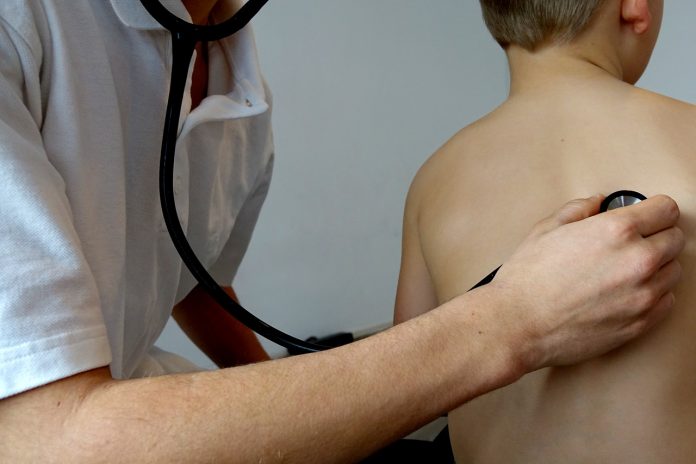HERSHEY, Pa. — One out of every 25 children will develop scoliosis or curvature of the spine. While some are babies or toddlers when diagnosed, most cases occur during the pre-teen years.
Girls are more likely than their male counterparts to develop the condition, which is why the Scoliosis Research Society recommends they be screened twice during their developing years.
Boys, on the other hand, are typically only checked once. School nurses and pediatricians screen for scoliosis by checking for abnormalities in the back or asymmetry — maybe one shoulder is higher than the other, or the hip, pelvis or chest wall is more pronounced on one side.
“Initially, it’s more of a physical observation,” said Dr. Scott Sorenson, a pediatric orthopedic surgeon at Penn State Children’s Hospital.
Under observation
Children with a curvature of less than 25 degrees, as measured on X-rays, are placed under observation. Spinal curves from 25 to 45 degrees typically require a brace worn for 13 to 18 hours a day for a year or two to prevent the curve from worsening and to guide future growth. When a curve reaches 50 degrees, discussions of surgical correction begin.
“That’s the point where we’ll usually see the curvature continue to increase no matter how mature your bones are,” Sorenson said.
Screws for stability
Surgery typically involves placing screws at each level of the spine needing correction. The screws are attached to two rods running along the spine to realign the bones.
“Usually it occurs in the thoracic spine where your ribs are, so it’s not a huge deal to fuse because that’s already a pretty rigid part of the spine,” Sorenson said.
Doctors place younger children in a full-torso cast that is changed every few months for a year or 18 months to correct their curvatures. For pre-adolescents who are growing too fast for their bones to be fused, a new technique allows surgeons to implant growing rods along the spine if surgery is deemed necessary.
Different levels
Mild cases of scoliosis typically require no treatment. Those with more severe curvature – 80 degrees or more — may experience diminished lung or heart function, an increased likelihood of developing arthritis and possible troubles with self-esteem, Sorenson said.
Sorenson said he always gets questions about whether yoga, physical therapy, and chiropractic care can alter the course of scoliosis.
“Those are all very important for helping with your posture, strength and overall conditioning, but none of them have been scientifically proven to alter the course of scoliosis.”










